As the long summer nights are waning, we appreciate our evenings in the garden more and more. Busy modern lifestyles can lead to hurried days, with early morning and evening being the only time we have to savor our gardens.
There is a magical BBC television series for very young children called
In the Night Garden that is designed to calm children down at the end of the day and settle them for bed. Our own gardens can become magical at night, a place where we can unwind and destress. With a little thought on what we plant, where we plant it and how we use garden lighting, we can have our own magical night gardens.
As the light fades, some aspects of the garden become enhanced — white, pale yellow and blue flowers can take on an enchanting luminescence that is not seen in daylight, while scent is released from night-scented flowers as the heat of the day lingers into the evening.
Let's take a look at the three ways we can acheive this magic in our gardens at night, by combining plants that perform best in the evening and at night with the subtle use of garden lighting.
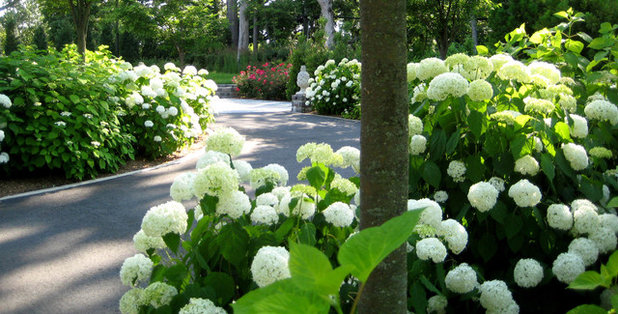
Katia Goffin Gardens
1. ColorWhite-flowering plants have a wonderful glow in the evening garden. The bright colors of annuals and perennials that fill summer borders — reds, oranges and yellows — lose their intensity as light levels drop. White flowers, like these
hydrangeas, reflect every scrap of light, making them appear brighter as other colors fade.
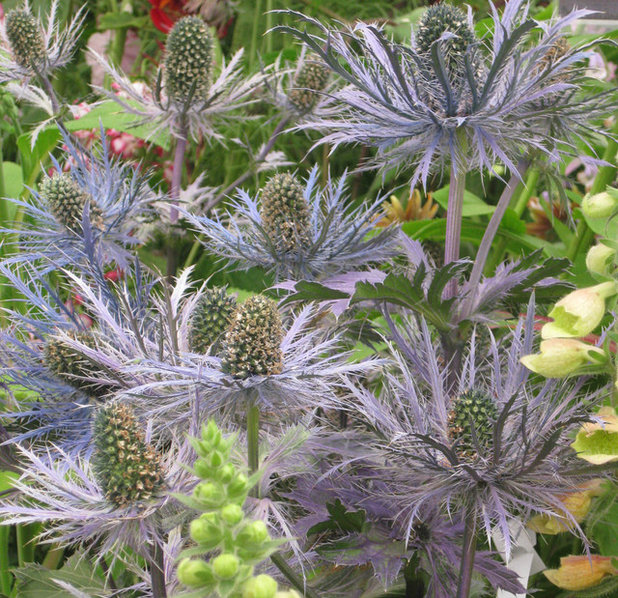
Jess Knowles
Pale blues and lilacs also look their best in fading light.
Sea Holly has tiny blue flowers that sit within the rosettes of silvery-gray bracts of this architectural plant.
Eryngium grows best in poor to moderately fertile soil in full sun.
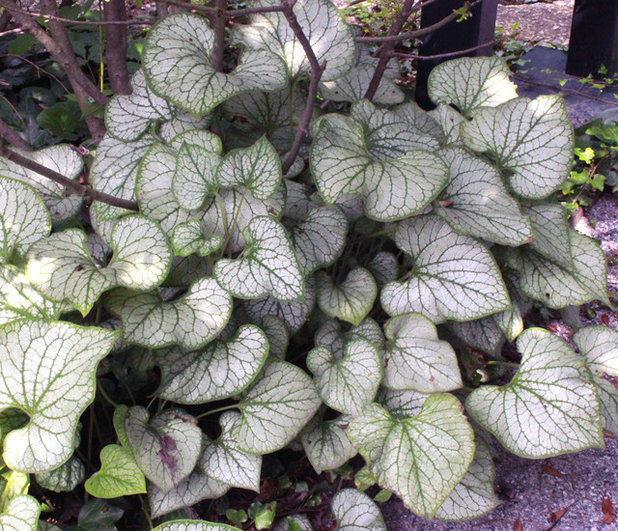
Bright foliage also creates an evening glow in the garden. Light-colored, variegated and silver-leaf plants reflect any available light, be it artificial or natural, while dark-colored foliage absorbs light.
Brunnera macrophylla 'Jack Frost', zones 3 to 8
(shown here)
is a perennial grown for its large, heart-shape silver leaves, edged and veined with green, and sprays of small blue flowers in spring.
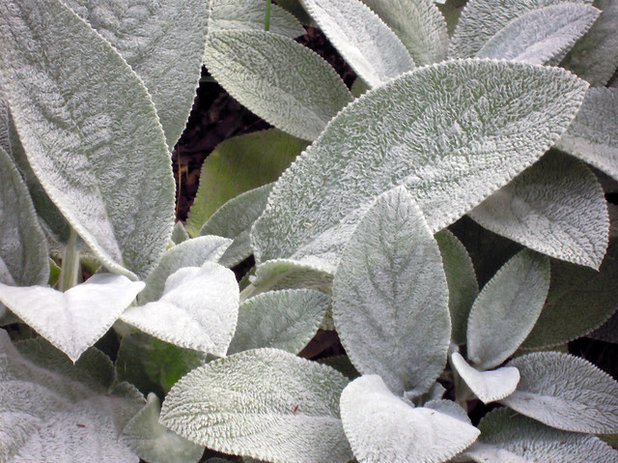 Lamb's ears
Lamb's ears (
Stachys byzantina, zones 4 to 8) has leaves that glisten in the moonlight. A ground-covering perennial, it has the most wonderful silvery leaves that have a woolly appearance. Leaves are often retained quite late into autumn or winter in mild areas, but the plant is not properly evergreen.
Plants flower in midsummer, and the thick, silvery, felty stems with knotty buds are quite a feature. The purple-pink flowers are not very conspicuous, being hidden among the fluffy foliage. Established plants are reasonably drought tolerant, making this a good plant for a dry, sunny border.
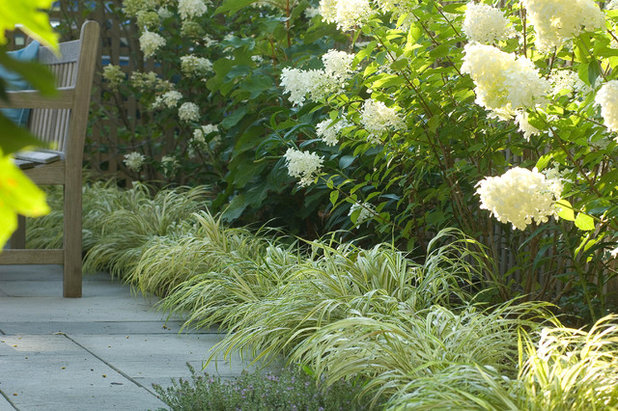
Westover Landscape Design, Inc.
Pale, light-reflecting grasses are perfect to edge a path with. Here their reflective light is not only decorative; it acts as a safety feature, illuminating the edge of the path.
Japanese forest grass (
Hakonechloa macra 'Aureola', zones 5 to 9) is a neat, clump-forming deciduous grass growing to 12 inches, with narrow, arching, green-striped, bright yellow leaves, often reddish tinged in autumn and early winter. Here, Japanese forest grass is planted under pristine white
Hydrangea paniculata, creating an enchanting evening walkway.
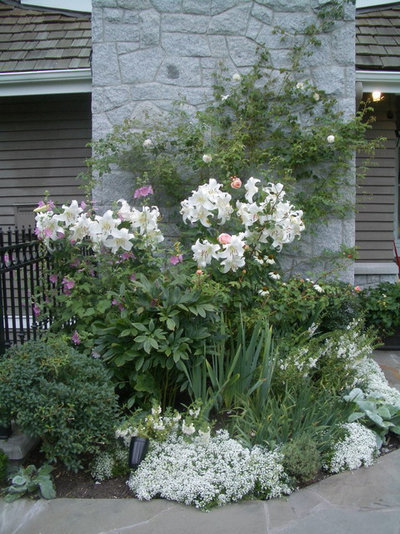
Glenna Partridge Garden Design
2. ScentScent is the second piece of our night garden puzzle. The heat of the day lingering into evening is reflected by walls and pathways, helping to diffuse the scent from flowers that are pollinated by night-flying insects. These plants tend to be white or pale, which additionally enhances their visability in the evening.
Lily 'Casa Blanca', shown here among other white-flowering plants, is a sensational, highly scented lily with glistening white flowers. It's one of the largest Oriental lilies you can grow. Lilies have one of the must-have scents of the the summer, a strong, sweet fragrance that permeates through a warm summer's evening.
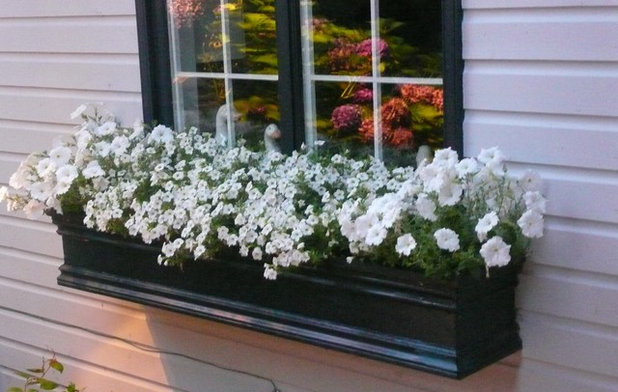
Petunias may seem be a strange choice for a night garden, but they have a secret. Petunias are night scented. Some smell during the day, but not to the same intensity of the night scent. Plant them in window boxes or hanging baskets to gain the full benefit of the evening scent.
Petunia 'Tumbelina' are among the most highly scented, producing wafts of vanilla fragrance that are strongest in the dead of night.
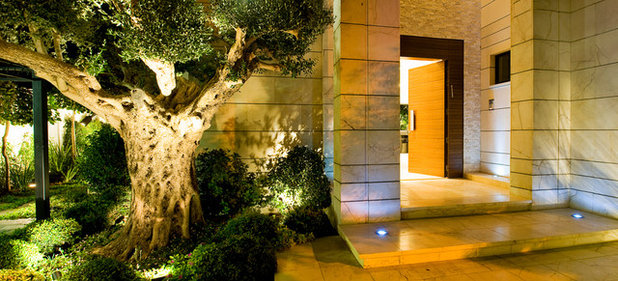
Yaniv Schwartz - Photographer
3. Garden LightingThough planting the right night-flowering plants in the right place will give you stunning effects, if you want to really enjoy your garden after dark, garden lighting is the final ingredient.
Try not to floodlight your entire garden. Instead, pick out specific plants and trees to showcase. Highlight architectural plants like
yucca, Phormium, Dicksonia and
Trachycarpus.
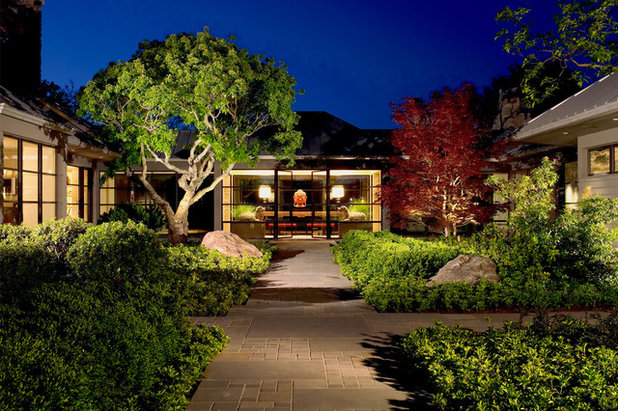
Rugo/ Raff Ltd. Architects
It takes a lot of of light to highlight plants or a tree — plants seem to just soak up light. Uplights showcase plants beautifully at night. These are lights on the ground, either set on a spike or recessed into the ground.
The lighting in this courtyard garden beautifully illuminates the main specimen trees and plants, casting interesting shadows on the pathway.
The use of mainly clipped evergreens in the planting means that there are no white or light-colored flowers to reflect any light, natural or artificial. But the benefit of this is the wonderful play of light and dark on the trimmed shapes created by the clever lighting.
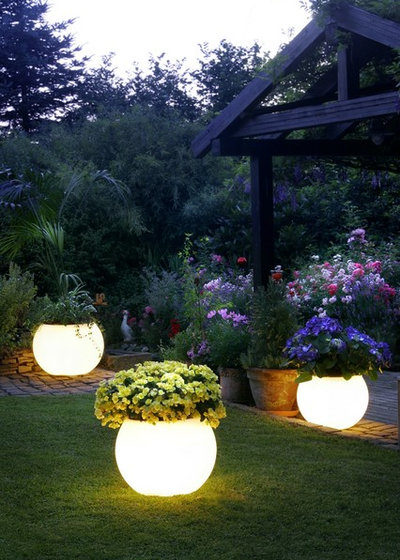
Certified-Lighting
Perhaps these illuminated pots, planted with night-scented flowers in whites, yellows and blues, are the way to combine all the features of a magical night garden.





